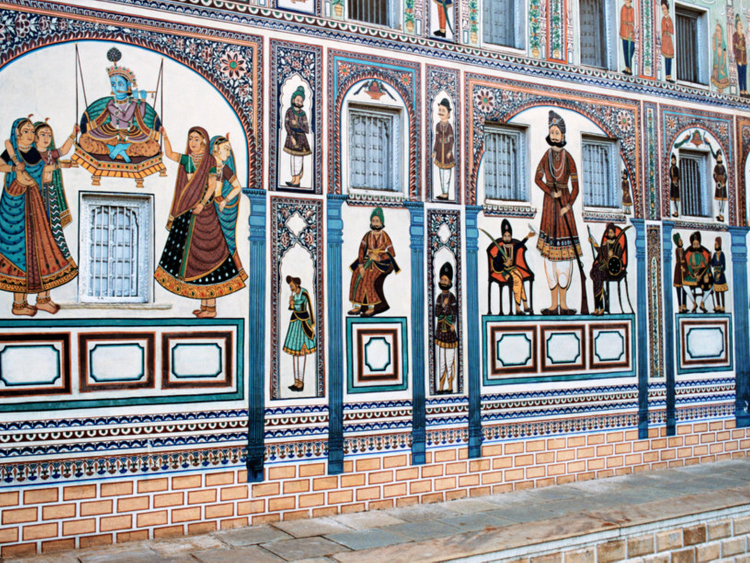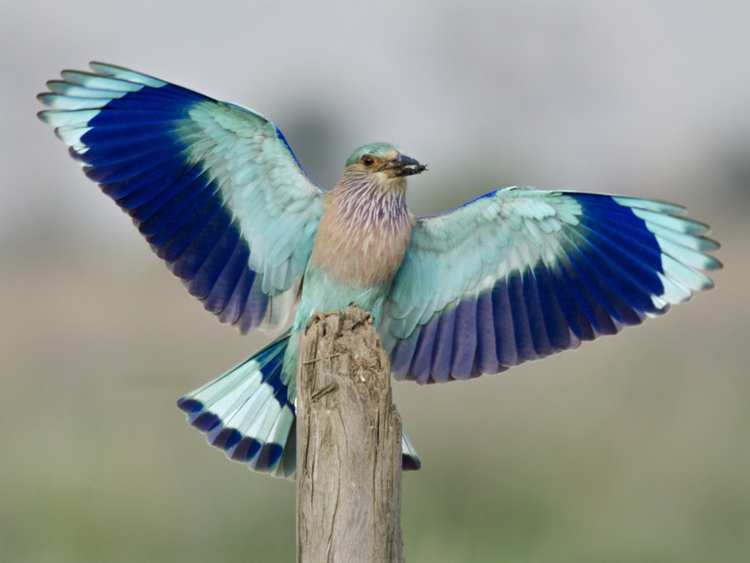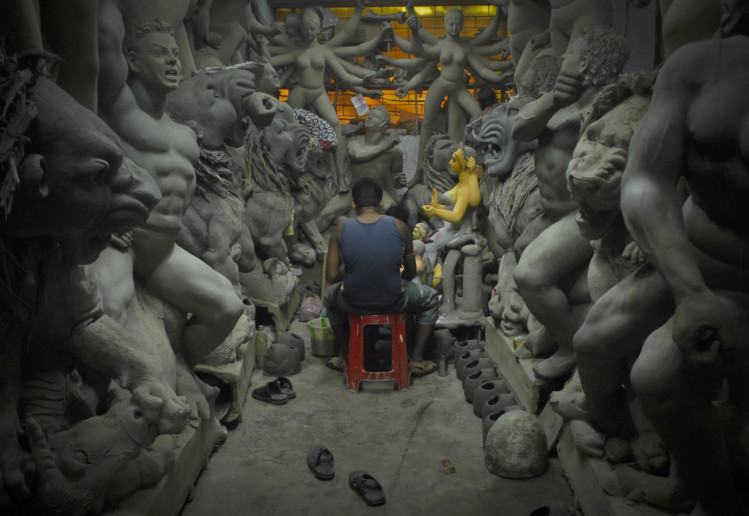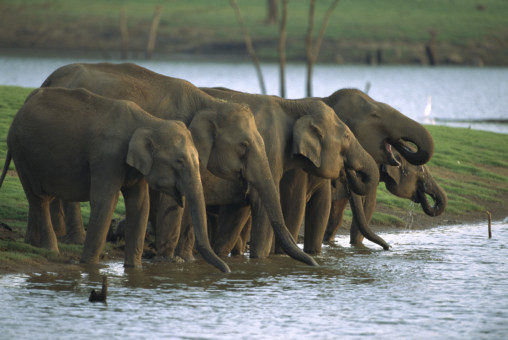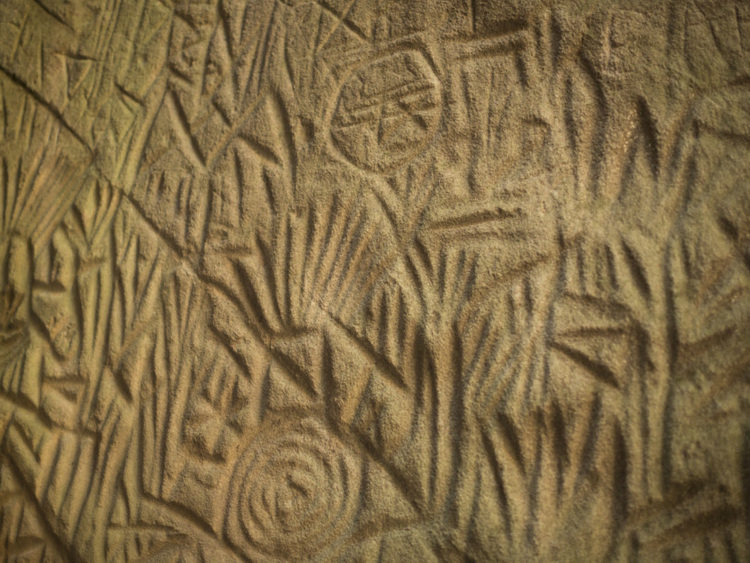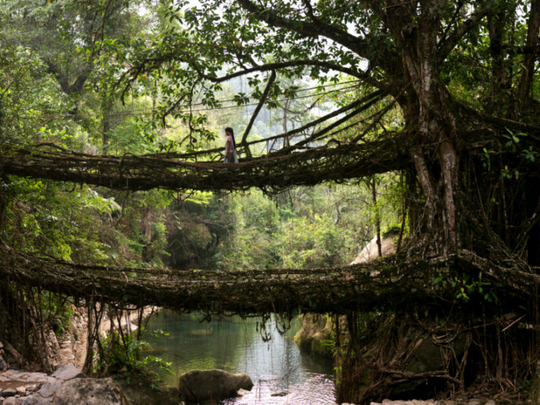
The living root bridges of Cherrapunji, Meghalaya
As geographical one-offs go, these bridges — constructed from the aerial roots of living banyan-fig trees — are odes to the singular. The local Khasi people interweave tangles of thick roots over streams to form a bridge. Some are more than 100 feet long and take up to 15 years to become fully operational. To reach the double- and single-decker bridges, you need to trek down through a verdant forested landscape, where waterfalls and wild flowers abound.
The havelis of Shekhawati, Rajasthan
Nothing here is pedestrian. That’s how it feels wandering through what’s come to be known as the open art gallery of Rajasthan. On display in monumental havelis is the largest concentration of frescoes in the world. Themes include mythology and history, and folk-inspired pieces sit next to more decorative ones. These painted edifices are emblematic of commissioned artists’ sophisticated technique, remarkable use of mineral and vegetable pigment, and attention to detail displayed in even the tiniest feature. The frescoes are also the signature of the mercantile Marwari community — an ultimate symbol and evidence of their success.
The birdsong of Pangot, Uttaranchal
Some 13km from the popular hill station of Nainital, the village of Pangot is an Eden for birdlife. Even if the lodge where you stay doesn’t have a hideout from which to observe the birds, you’re assured sightings aplenty on just about any wilderness trail. Here a chestnut-crowned laughing thrush, there a great barbet, everywhere a green bee-eater. If you’re in pursuit of the more hard-to-see brigade such as the cheer pheasant, kokalass pheasant, or even the elusive civet cat, it pays to hire an experienced guide who knows both where and how to look.
The pottery of Kumortuli, Kolkata
Kumortuli translates as area of potters. The winding maze of alleyways, traditionally a potters’ quarter, is punctuated with stalls, set only pixie steps from each other. With a zeal only fine artisans can muster, clay is moulded and shaped into statues of Hindu gods and goddesses. Although most icons fashioned here have features that reflect tradition, you’ll also run into figures that have drawn inspiration from a popular face in Bollywood. The demand for the clay idols is, as expected, locally overwhelming at the time of Durga Puja. But the quality of the craft has taken it beyond to a large community of NRIs in more than 90 countries worldwide through active export.
The elephants of the River Kabini, Karnataka
The banks of the River Kabini feature a litany of strategically positioned wildlife lodges, and in-house naturalists can accompany you on safari into the adjoining Nagarhole National Park. Don’t miss the Asian elephants congregating, feeding and tending to their young. Numerous chital, sambar and gaur are evidence that the park supports a high density of herbivores. Tigers, leopards and wild dogs are an added bonus.
The caves of Wayanad, Kerala
If you’re a journey-over-destination traveller, the up-the-stairs-and-hills climb to the Edakkal caves is worth it, for you beat through thickets of green to get to expansive views at the top. The caves are natural formations. The light filtering in through fissures reveals the inscriptions and carvings etched into the walls. Animal figures with eccentric headgear, pictorial writings, etchings of wheels, bows and trees, all conjure up the time of Neolithic man. Experts have declared that the drawings date as far back as 5,000BC and there have been recent linkages of a new group of motifs with the Indus Valley civilisation.
The camps of Thiksey, Ladakh
If you want to up the ante on the Ladakh experience of high-altitude passes, cobalt-blue lakes and ancient monasteries, glamping is the answer. The Ultimate Travelling Camp’s Chamba Camp ticks all the boxes. The spacious tents come equipped with rain showers, personal butlers, private decks and panoramic mountain views. That the camp lives in synchronicity with the local community adds further appeal. Experiences such as polo, archery and séances with the village oracle are as accessible as the more ubiquitous white-water rafting, mountain biking or birding along the Indus.


